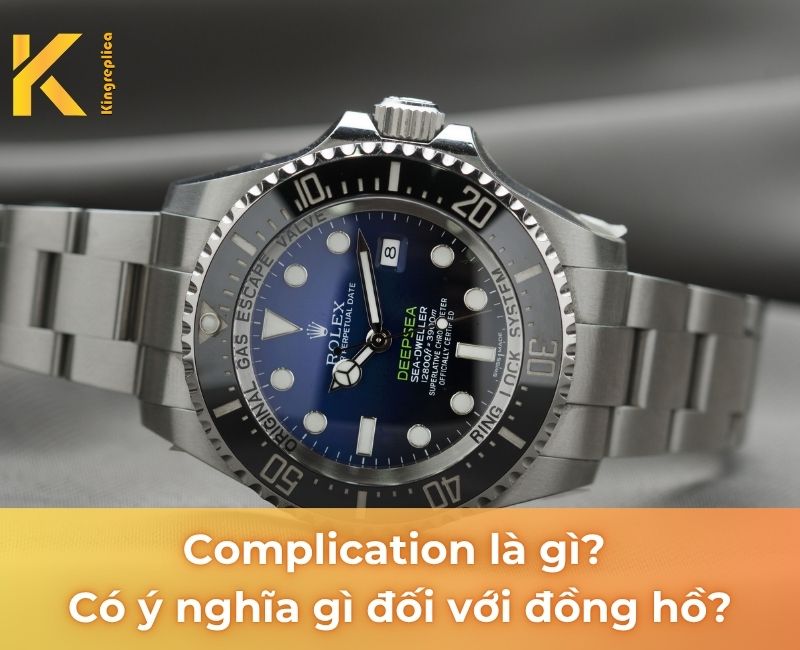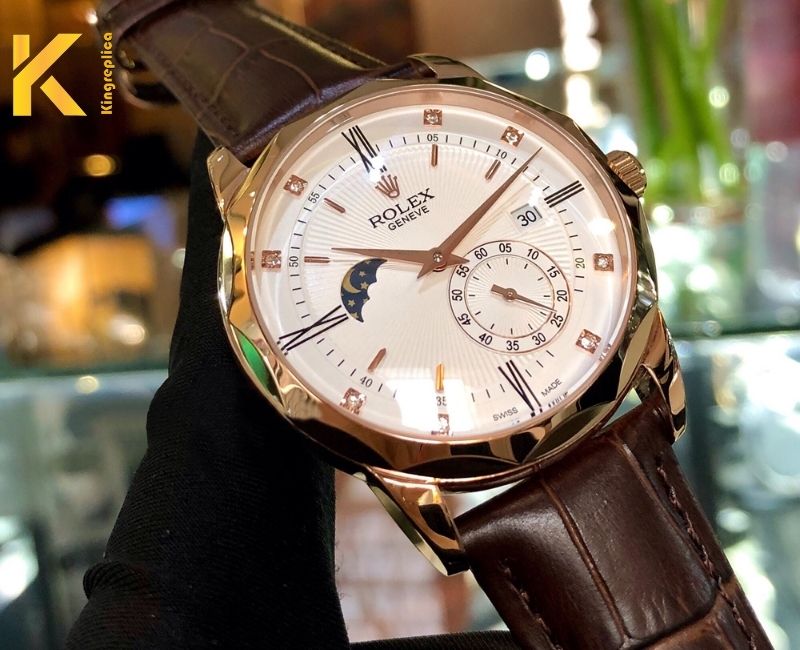Blog Replica Watch
What Is a Watch Complication? Discover Its Role in Horology
Two watches may share the same case and dial design, but one with a perpetual calendar is significantly more expensive than one without. This is the essence of a “complication” in horology—the added mechanical functions that elevate the complexity and value of a timepiece. In this article, King Replica breaks down what is a watch complication and why it matters. Let’s explore.

1. What Is a Watch Complication?
In mechanical watchmaking, a complication refers to any additional function beyond the basic display of hours, minutes, and seconds. Common types include date, chronograph, moonphase, perpetual calendar, and more. Each added feature increases the complexity of the movement and demands greater craftsmanship.
A standard complication watch contains around 250 mechanical parts. Meanwhile, a grand complication can exceed 1,000 components, found only in elite brands such as Patek Philippe, Vacheron Constantin, Audemars Piguet, and Rolex.
2. Most Popular Watch Complications
Once you understand what is a watch complication, you’ll appreciate how each feature adds unique mechanical value and enhances both the craftsmanship and worth of the watch. Here are the most common types:
2.1 Day/Night Indicator (Sun & Moon)
This function simulates the transition between day and night. The mechanism splits 24 hours into two halves: a Sun symbol from 6:30 AM to 6:30 PM and a Moon symbol for nighttime. It offers aesthetic appeal and helps track time when you can’t view external conditions.

2.2 Moonphase
The moonphase complication shows the current phase of the Moon in real time—new moon, full moon, or crescent. It follows the 29.5-day lunar cycle and is usually displayed through an aperture on the dial.
2.3 Tourbillon
Invented by Abraham-Louis Breguet, the tourbillon compensates for gravitational errors affecting the balance wheel, the component regulating timekeeping. By constantly rotating on a fixed axis, it enhances timekeeping accuracy across various wrist positions.
2.4 Chronograph
The chronograph is a stopwatch function built into the watch, enabling users to measure elapsed time precisely. Separate pushers allow start, stop, and reset actions. This is particularly useful in sports like running, swimming, or racing.
2.5 Heartbeat
Heartbeat watches feature an open-heart design on the dial, revealing the oscillating balance wheel. Introduced by Frederique Constant in 1994, it highlights the watch’s mechanical rhythm and internal beauty.
2.6 Altimeter
The altimeter shows the current elevation above sea level in meters (m) or feet (ft). Integrated into watches for pilots, climbers, skydivers, or skiers, it uses air pressure sensors to calculate real-time altitude, enhancing orientation and safety.
2.7 Tachymeter
A tachymeter is a scale engraved on the bezel or inner ring of the dial, commonly found in racing or chronograph watches. It calculates average speed over a fixed distance (1 km or 1 mile). By timing the travel and reading the pointer on the scale, users can easily determine speed.
2.8 Repeater
A repeater chimes the time via mechanical hammers. When activated by a slide or pusher, it sounds:
- Low tones for the hour
- Double tones for each quarter-hour
- High tones for remaining minutes
Found in high-end watches, repeaters require precise assembly to ensure clear, rhythmic chimes.
2.9 Perpetual Calendar
This complication automatically adjusts for day, date, month, and even leap years without manual correction. It accurately tracks month lengths (28, 30, 31 days) and four-year leap cycles. Some models function correctly for over 100 years. It’s one of the most prestigious features in luxury watchmaking.

King Replica has now given you a comprehensive answer to the question: what is a watch complication? These added features modernize timepieces and elevate their utility and craftsmanship. At King Replica, our collection of high end watch replicas includes full-function complication watches that mirror their original counterparts at only one-tenth the cost. Contact us today for personalized assistance!


 Tiếng Việt
Tiếng Việt